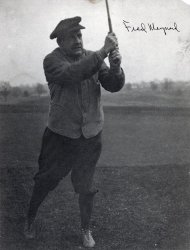
MAY CONTAIN NUTS

Search Shorpy
SHORPY ART

Framed or unframed, desk size to sofa size, printed by us in Arizona and Alabama since 2007. Explore now.
Join and Share
Ad-Free Shorpy
Shorpy is funded by you. Patreon contributors get an ad-free experience.
Learn more.

Recent comments
- Freeze Frame
- Texas Flyer wanted
- Just a Year Too Soon
- WWII -- Replacing men with women at the railroad crossing.
- Yes, Icing
- You kids drive me nuts!
- NOT An Easy Job
- I wonder
- Just add window boxes
- Icing Platform?
- Indiana Harbor Belt abides
- Freezing haze
- Corrections (for those who care)
- C&NW at Nelson
- Fallen Flags
- A dangerous job made worse
- Water Stop
- Passenger trains have right of way over freights?
- Coal
- Never ceases to amaze me.
- Still chuggin' (in model form)
- Great shot
- Westerly Breeze
- For the men, a trapeze
- Tickled
- Sense of loneliness ...
- 2 cents
- Charm City
- What an Outrage
- Brighton Park
Member Photos
The Shorpy
Print Emporium
Print Emporium
Search Shorpy
Search results -- 30 results per page
- A Lion in the Sand: 1900
- ... license). The lion has killed the elephant: William McKinley and party. The snake is the devil himself as portrayed in the book of ... Posted by Dave - 08/24/2011 - 1:32pm -
![A Lion in the Sand: 1900 Continuing our sojourn by the sea: Atlantic City circa 1900. "Sand modelling." 8x10 inch dry plate glass negative, Detroit Publishing Company. View full size.
Yesterday's headlinesSeeing the phrases "There is hope" and "Domestic Troubles" piqued my curiosity. Apparently this is an allegory about the 1900 presidential election, and in particular about William Jennings Byran, the populist who was reputed to have taken over the Democratic Party. The elephant at the top is a dead giveaway.
Mixed Bag of SandThe sculptor seems to be revealing his inner conflicts. Is that Fred Nietzsche? A male lion and a female snake in domestic conflict with the proverbial elephant in the room? I'll leave it to the Shorpy historians to explain what its about. On a lighter note, I thought the kid crawling in the sand on the lefft looked like an lizard rushing over to see whats going on.
Like sand through the hourglassThis photo immediately brought to mind sand-sculpting a little more local to me in space and time, at Revere Beach in Massachusetts.
The artistic style is strangely familiar, and the "big theme" choices for subject matter are similar. 1900's "Domestic Troubles" could easily be placed right next to 2009's "Ouroboros: Life, Rebirth, and Stuff", the second-place winner at the annual competition on Revere Beach.
http://reverebeachpartnership.com/nessf07/index.htm
Bryan's Populists were depicted as a snakeIn a popular cartoon of the time, depicting the Bryan wing as devouring the whole of the Democrat party -- represented by the Donkey then as now. I think the sculpture may be showing that the snake is killing the lion, and thus crushing the notion of the King of the Beasts cowardly or not. Embraces of negative caricatures are familiar in our politics. For example, Martin Van Buren's faction in New York State adopted the name "bucktails," which was originally meant as an insult to show them running away.
Concerning PoliticsThis is a stretch, but here I go anyway. The man is the Democratic presidential candidate for that year who has an anti-imperialist platform and the Republican press mimic him as "the cowardly lion": William Jennings Bryan (The hair is artistic license). The lion has killed the elephant: William McKinley and party. The snake is the devil himself as portrayed in the book of Genesis.
Pardon me for wishing myself good luck with this one.
Images in the sandThe 1900 election explanation sounds credible enough, but person in the "There Is Hope" sculpture has way more hair than Jennings ever did. On another note, that sure looks like a rather large lizard scrabbling along the sand in the upper left section. Is it, or is it an optico/photographic illusion?
Update: on the other hand, maybe I should read all the comments before commenting. But hey! I just want to fit in here.
[He/she/it should be familiar to cryptozoologists everywhere. - Dave]
No sweat tterranceThat long hair bothered me too until I thought of him being
represented as a biblical prophet.
Only his sister would call him a lizardThat's because little boys can be so annoying!
Dave, thank you so much for this ongoing shore series. I'm from New Jersey, and I'm inordinately proud of my little densely-populated state of cities, shorelines, farmland, highways, and forests. We're tremendously diverse and remarkably tolerant, for the most part, being descended from Quakers at one end and Dutch merchants at the other. The joie de vivre on the faces of these bathers, the care and engagement with the world that you see in these sand sculptures, all make me proud of my 250-year New Jersey heritage.
Bravo, Garden State!
With all that hairI think this may be Robert La Follette, another Populist orator of the time.
Do you know the Munyon ManMunyon Remedy Company out of Scranton, PA. 'There is Hope' for consumptives. I recognized Mr. Munyon from some old shares of stock I have.
Company went down with the crash of 29 or soon after.
(The Gallery, Atlantic City, DPC)](https://www.shorpy.com/files/images/4a18212a.thumbnail.jpg)
- Hobey Baker: 1913
- ...
This is all from memory, having read Michael McKinley's excellent "Putting A Roof On Winter".
My goodness! Hobey ... Posted by Dave - 04/11/2008 - 2:21pm -
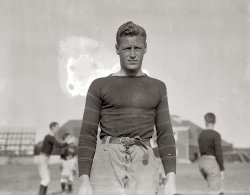
- The Turning Point: 1910
- ... the estate of the late John Hay, Secretary of State under McKinley. It was in a log cabin in Crystal Park that Secretary Hay sought ... Posted by Dave - 08/03/2012 - 4:06pm -
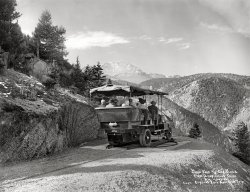
- Albany Armory: 1905
- ... bombing and killing European royalty and William McKinley. State governments constructed armories against the threat, and middle ... Posted by Dave - 06/02/2020 - 2:55pm -
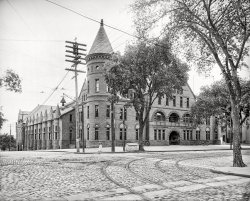
- Circle in the Square: 1908
- Buffalo, New York, circa 1908. "McKinley Monument, Niagara Square." 8x10 inch dry plate glass negative, Detroit ... Posted by Dave - 07/22/2012 - 10:40am -
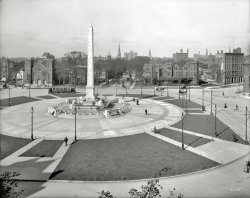
- Toy Story: 1925
- ... Gen. Sherman, Adm. G.W. Baird, Judge Dent, and President Mckinley.]
(The Gallery, D.C., Horses, Natl Photo) ... Posted by Dave - 09/14/2011 - 3:45am -
![Toy Story: 1925 Washington, D.C., circa 1925. "The toy shop, 1207 New York Avenue." The former Apolonia Stuntz store (seen earlier on Shorpy here and here) where Abraham Lincoln is said to have bought toys for his son Tad, now the Lee Lung First-Class Laundry ("Bosom 6¢"). A scene so sun-dappled and languid, it's making us ... very ... sleepy. National Photo Company Collection glass negative. View full size.
Camera ShyThe horse may be drowsing, but his groom is very aware of the photographer.
PricesIs that 6 cents a bosom? Perhaps a dime for the pair?
Looks like horseyhas a hairball.
Boot & Shoe RepairingIt's good to see Louis Kurtz is still going strong these 12 years later. His store hasn't changed a bit.
Rooms For RentI wonder how you got to your room when Lee Lung had closed up shop for the day.
Before inflationTo launder a complete shirt: 7 cents for the shirt, 15 cents for the collar, and 3 cents for the cuffs - a total of 25 cents. In 1966, it cost me 25 cents to launder a shirt (with starch) in Carbondale, IL. The collar and cuffs were attached.
Louis Kurtz: Presidential Bootmaker
Washington Post, Sep 23, 1923.
Made Boots for Gen. Grant.
By Byrd Mock.
How many people in Washington know that the shoemaker to President Grant still makes shoes at this little shop at 1209 New York avenue northwest?
Above the door of this battered-looking old shop is the legend, "L. Kurtz, Boot and Shoe Manufacturer," but it takes good eyes to make out the lettering dimmed with age, for the sign has never been changed or renewed since it was first nailed over the door of the cobbler's shop 43 years ago, when he moved from the old shop at 733 Seventh street northwest, where Grant, both as general of the United States army and as President of the United States, personally paid frequent visits to have his boots made and repaired, as well as to order shoes for his entire family.
At the time Gen. Grant gave his first order for pair of boots, L. Kurtz was a young apprentice to his uncle, Louis Kurtz, and it fell to the young man's lot to stitch the tops of the uppers of the general's boots and to fit them to the bottoms, which were made by his more experienced uncle.
Gray haired, horny-handed, wrinkle-skinned, almost at the end of his three score and ten, Louis Kurtz still toils. "Week in, week out, from morn till night," smiling as he sits on his low and much worn cobbler's seat, keeping a sort of jagged rhythm with his hammer strokes with which he punctuates his conversation. …
[Stories of Grant's first visit to the shop, his shoe size, "He wore a 7½ on a wide last," and visits from Grant's children. Other famous patrons: Gen. Sherman, Adm. G.W. Baird, Judge Dent, and President Mckinley.]
(The Gallery, D.C., Horses, Natl Photo)](https://www.shorpy.com/files/images/32146u.thumbnail.jpg)
- Hotel Nicollet: 1905
- ... three U.S. presidents – Grover Cleveland, William McKinley and Theodore Roosevelt — along with other local and national ... Posted by Dave - 06/23/2017 - 10:29am -
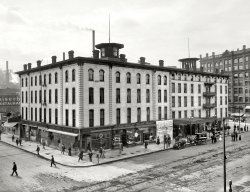
- Barber and Ross: 1926
- ... My family are DC area natives from the 1870's. Wilson and McKinley Tech graduates. My father graduated from GW.
Most of my ... Posted by Dave - 08/08/2012 - 1:09pm -
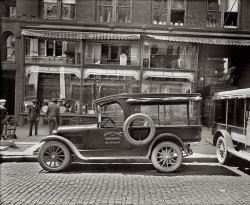
- Atlantic House: 1907
- ...
Famous guests included President William McKinley, presidential candidate William Jennings Bryon who gave a speech in ... Posted by Dave - 10/08/2016 - 7:06pm -
![Atlantic House: 1907 "The 175 room hotel burned to the ground during a blizzard on January 7, 1927."
Circa 1907. "Atlantic House, Nantasket Beach, Massachusetts." 8x10 inch dry plate glass negative, Detroit Publishing Company. View full size.
January 7, 1927Sadly, the Atlantic House conflagration has apparently been relegated to a minor footnote in history by other events occurring on the same day (as often happens), such as the beginning of regular commercial transatlantic telephone service and the Harlem Globetrotters playing their first basketball game (in Hinckley, Illinois).
The same spot todayHere's what that same spot looked like in 2010. I prefer the old hotel.
Before the FireThe photo below, from the Library of Congress, shows the hotel in 1882. The Queen Anne style building was built in 1877 by John L. Damon. There were multiple dining rooms, as well as private dining rooms, an immense ballroom, game rooms, roulette parlor, as well as several bars and lounges. Damon's son took over the establishment, but he sold the hotel in 1924. Several sources mentioned the hotel was on the verge of bankruptcy when the fire took place. After the fire multiple houses were built on the property, but eventually the land was turned into seaside condominiums.
Famous guests included President William McKinley, presidential candidate William Jennings Bryon who gave a speech in the ballroom, and Enrico Caruso who performed at the hotel.
The Detroit Publishing Company photo here shows the same building and beach in 1920. In this photo the photographers shack is gone, and the bathhouse has been moderately modernized. The beach in this photo looks much larger, but this photo may have been taken at low tide.
The newspaper article about the fire below is from the Lowell [Massachusetts] Sun on January 8, 1927, Page 4.
(The Gallery, DPC, Swimming)](https://www.shorpy.com/files/images/SHORPY-4a18116a.thumbnail.jpg)
- Capitol Square: 1910
- Columbus, Ohio, circa 1910. "State Capitol and McKinley monument." And birdhouses. 8x10 inch dry plate glass negative, Detroit ... Posted by Dave - 10/06/2020 - 11:34am -
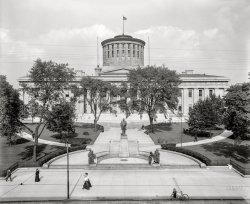
- Central Station: 1901
- ... million visitors. Notable as the location of President McKinley's assassination by anarchist Leon Czolgosz on September 6 at the ... Posted by Dave - 04/24/2018 - 1:57pm -
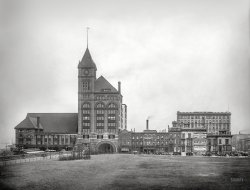
- Uncle Fred: 1905
- ... of Government land fraud cases under Presidents McKinley, Theodore Roosevelt, and Taft.
He was a close friend of my ... Posted by CarlosJ - 07/02/2018 - 6:57am -
